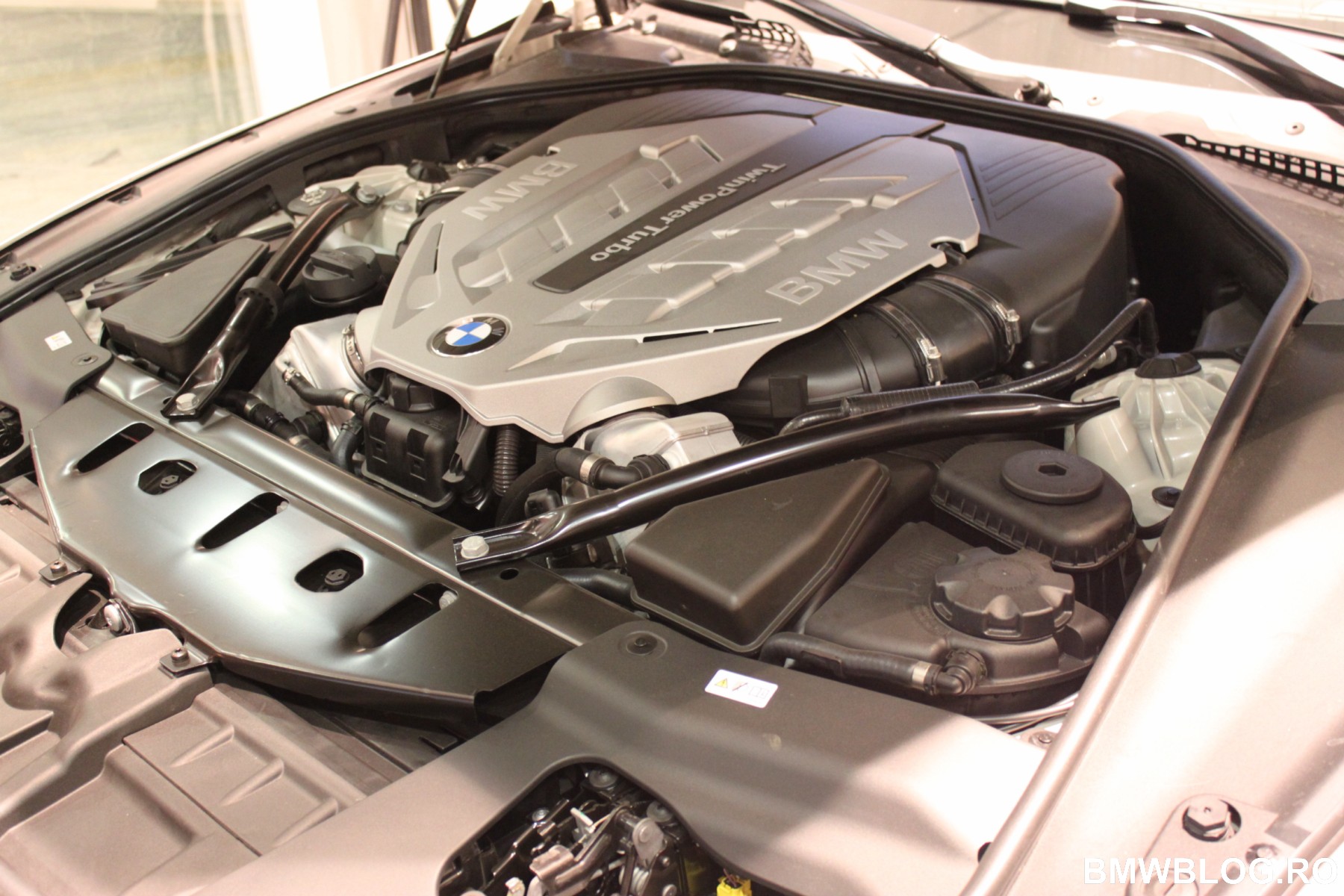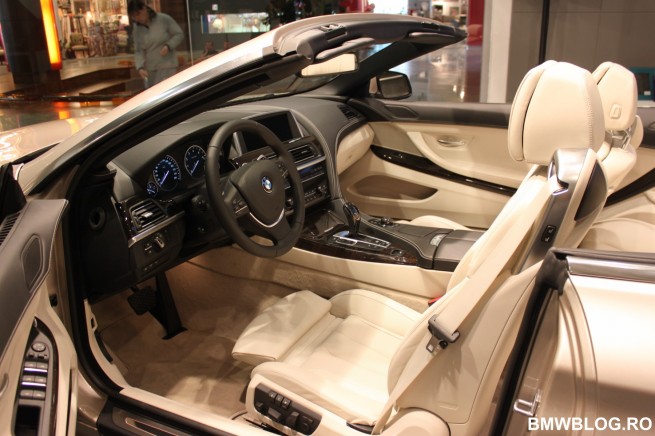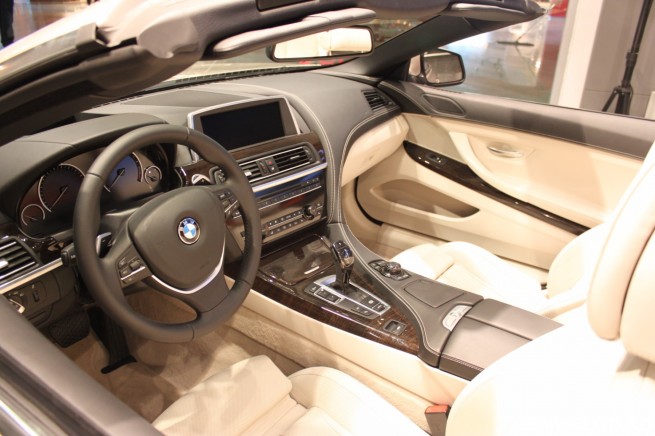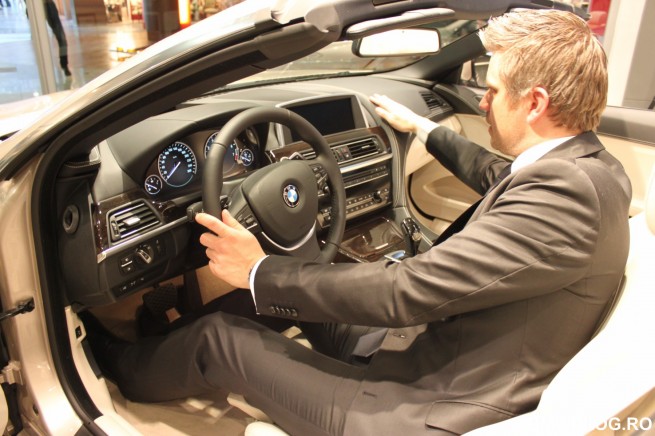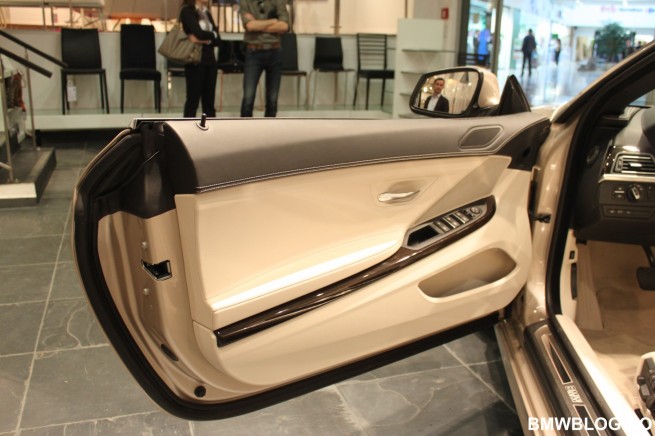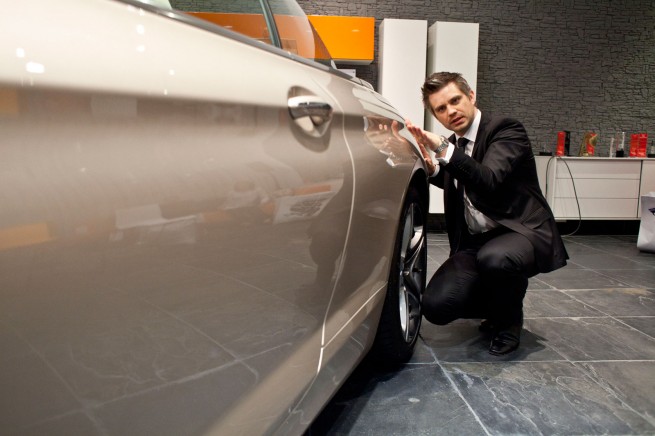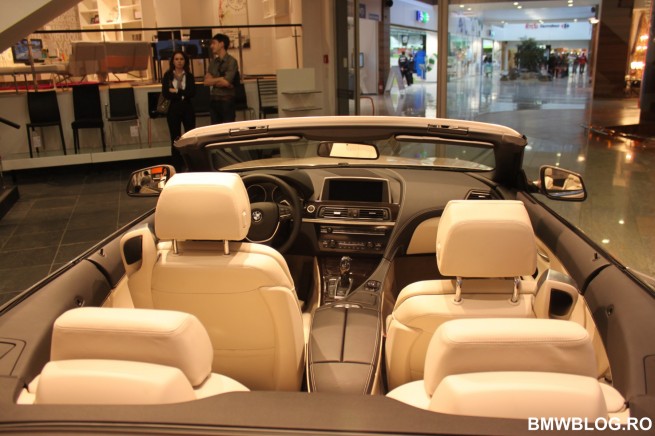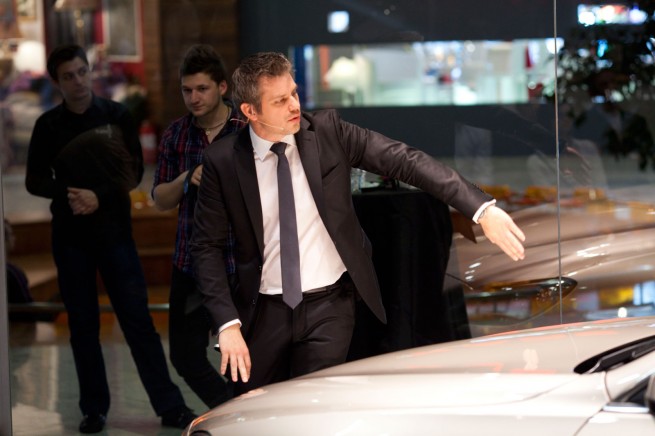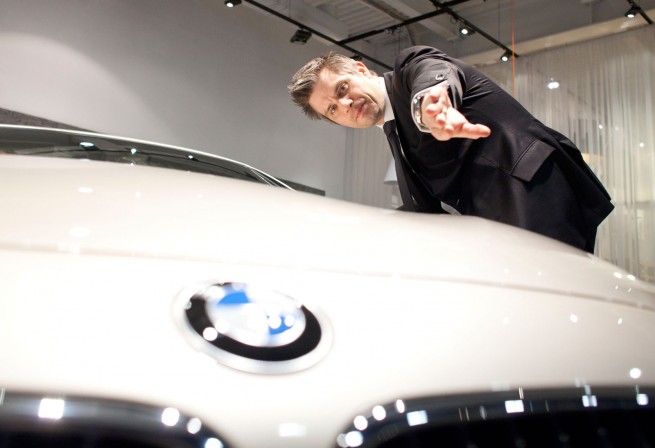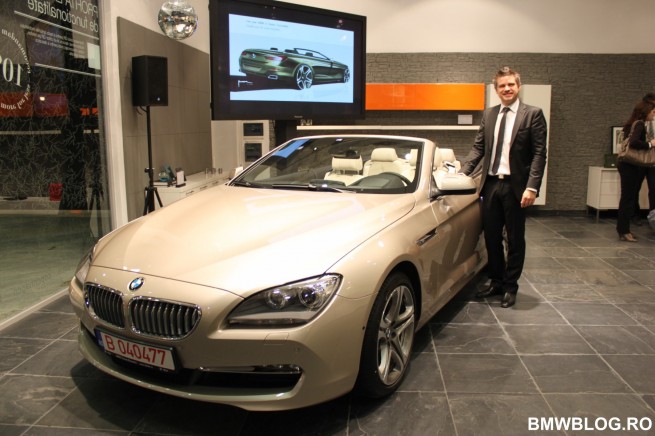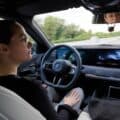The 2012 BMW 6 Series Convertible was launched in November 2010 and emphasizes the new design language at BMW. The high-end convertible brings out to the market a fresh, sleek and quite sporty look, and features the most advanced chassis technology and the most innovative comfort, infotainment and safety features.
During an exclusive design presentation of the new BMW 6 Series Convertible, BMWBLOG had the opportunity to sit with Jochen Paesen, member of the design team who penned the new cabriolet. Jochen took the time to explain for our readers both the exterior and the interior design of the 6 Series Convertible.
Jochen was born in Belgium and lived in South Africa, France, England, Netherlands and Germany. He studied in England, at Coventry University, then for 2 years at the Royal College of Art. He has previously worked with Volkswagen for 5 years, then in 2006 he joined BMW.
Jochen has also designed the interior of the BMW Vision EfficientDynamics.
BMWBLOG: Jochen, please tell us what was your role in designing the 6 Series Convertible?
Jochen Paesen: I was part of the team – I started at BMW four and a half years ago, so I’m quite new at BMW. The design process takes quite a long time, so the first project I started to work on was the design of the 6 Series. I worked on the interior, but the main designer of the 6 Series interior was Christian Bauer, a German colleague of mine, and I was able to help him with the seats, the back area, doing the support side, let’s say, because one designer cannot do anything on his own.
What you can see here are definitely his lines, his design, which was selected and put into production.
On the exterior it was Nader Faghihzadeh, who also did the interior of the 7 Series. The interaction between the exterior and the interior, especially for a car like a cabrio, where we want to make sure that all belongs together – the front side flows into the back, the lines move together with each other. There’s a very close relationship between the exterior and the interior design.
BMWBLOG: In terms of interior design, could you please show us the main features of the 6 Series Convertible?
Jochen Paesen: It was very, very, important to get the lines of the exterior move into interior. When you sit in the car, lines that are running from the front of the car move into the interior. So it was very important that we have this feeling of “flowing”, of freedom. When you’re driving in the country lanes, in the mountains, you have these flowing forms, and the feeling. That’s the first thing that’s important to see with the doors closed, the bond between the exterior and the interior.
When we get into the car, we see it’s extremely important to have luxurious materials. For example the alternative stitching lines accentuate the quality materials, and the two-tone color, as well. It was very important to create driver-orientation – for BMW this is very important. We also wanted to create inclusive passenger orientation – you have driver orientation and the passenger feels he’s left alone, so it was very important to have swooping lines, very nicely controlled lines, that actually flow, that have a forward movement – so you have a driver orientation, but not excluding the passenger.
When you sit in the car you have a clear angle towards the driver, so the driver knows that this is the space enclosed for him. We tried to keep the horizontal feel, because we want to stretch the car lines – we did the same with the exterior, and get that horizontal feeling – stretching the car, and giving also a nice, stable look.
It was important to differentiate the driver side from the passenger side – accentuate the driver orientation but have a nice, elegant, clean area.
Other important features are the black panel, which we’re using to create a high quality feel; we have a nice, clean surface that lights up with the functions that we need, the freestanding display. It’s important for us to get dynamic lines, so it was nice to have a flow, we wanted to be as free as possible, because if you create volumes that are wide, but low, it creates a very nice, open feeling.
The freestanding display gives us the opportunity to work with layers, but also with volumes that are disappearing and don’t need to be covered. It also has to do with modernity, as in every house today we have flat screens, screens that are hanging – and we wanted to get the same feeling. It’s like a podium, standing on a stage and the information is presented to you.
The line that goes from the driver side, from the head-up display, is running out into a nice horizontal line.
When we’re talking about the doors, here again we’re doing layering, in a sense that we’ve got volumes that are lying on top of each other. It was inspired by sails: when you look at the water, the sail has got nice wind in it, there’s a beautiful form. Same here, and you see this best when the door is closed, and there’s a nice continuation. So we are going from the front to the rear and all belongs together.
You can see the theme repeating itself– if you see one part of the car, you know it belongs to that other part of the car. It has to have this familiar approach.
When you look to the back you see the continuation to the rear section which is flowing, and our aim was to have this integrated into this as much as possible with the rear, so when the car is open, it’s like the deck of a boat, it’s a beautiful continuous surface. So, these lines, these volumes – it was important to give this feeling that the exterior is growing on the interior. In the back we have this single-seat character, and when you’re sitting there you feel like ‘this is made for me’, it’s reminiscent of the front, where we have the same formula.
BMWBLOG: Can you tell us more about the driver-orientation in the car? How was it expressed?
Jochen Paesen: This is best seen when you sit in the driver’s seat: you can see the lines moving forward, this feeling of direction you’re driving to. All the lines are either moving forward or flowing around you, and giving the direction and the driver orientation.
BMWBLOG: What was the source of inspiration in designing this car?
Jochen Paesen: With this car, clearly, it was water. But in general when we design cars, it can be anything, the smallest thing, or even a building. It varies, but in this case it was the idea of water and a glamorous approach.
BMWBLOG: What is the interior design item in this car that you like most?
Jochen Paesen: That’s very hard to answer, because I think that only together it works. What I like so much is that it works both for the exterior and the interior, as all the lines have somehow a similar approach. And when it comes together, the car just fits. So it’s not just one single item I like, but the way the concept flows and the way it works together.
BMWBLOG: Were you also involved in designing the 6 Series Coupe?
Jochen Paesen: Yes, because I mainly worked with the seats and the back area, and as they are for both cars – Coupe and Cabriolet are two things we work on in parallel, so I also worked on the interior design of the Coupe.
BMWBLOG: Jochen, please tell us also some key points about the exterior design.
Jochen Paesen: You can clearly see, starting from the front, this idea of water going around an object. The lines create a very muscular and in the same elegant look. I imagine this car cruising somewhere. It’s very fast, but it’s not necessarily brutal. It can be brutal when you want it to be as such, and it can be fast when you want it to be fast, but it can also be elegant. And I think the car shows this quite well in these lines.
When you look at the grille, it’s quite upright. It’s sitting forward and it has this kind of movement to the front – that’s in order to give us the direction. And even when it stands, you have a feeling like it is moving.
As for the kidneys or other core elements – the importance is to do them again and again, but they don’t have to remain the same. The lights don’t always have to be round, there is an interpretation. You have the freedom to say – what do the rounds double headlights mean? What character do I want to create? What face do I want to create for the car?
This car is low, wide, has a certain presence when it’s standing in your driveway. When you look at it, you’re excited to see it, it touches you on the heart and it connects with you in a way.
The sideline is also about the BMW heritage, but also we have these concave and convex surfaces, we’re still playing with light and shadow, like we’ve been doing for a while. In the same time, we’re developing it further, we’re looking at how elegant can it be, how far can we take it, and how does it help us. Here it helps us by creating very nice shapes, over the wheel arches, with a beautiful sculptured feeling. When you look at this, it looks really stretched but without being brutal. Nice shapes.
I always think the car is successful when you like to wash it. When you wash it, it has beautiful forms, nice shapes. For me those are the kind of things that make me happy: this kind of shape, of transition, brings quality to the design.
Then, all the lines which start at the front go back of the car, so it flows. When you look from behind, the car looks like a deck of a boat. We tried to keep the car as horizontal as possible. It is important for a sports car to sit low to the ground, but visually you’re able to show more by creating lines that are coming in, coming down, bringing the surfaces visually down. It’s not something that you see consciously, but in your mind something shows that the lines bring the volumes down. These are the kind of tricks we played with in order to give width to this car.
BMWBLOG: And now moving to a more personal question: taking into account all the cars, not necessarily BMWs, what is the design you like the most?
Jochen Paesen: Actually it is a BMW, because I love BMW, I am a BMW guy. BMW for me has a lot of nice old cars: for example the 507 – this is very beautiful, very pure. It’s one of those cars you see it drives well, even if it’s standing still. And exactly those kind of things we’re trying to do in our design – giving it movement while it’s standing still. The 507 does that 100%. I also like the CS Concept – it’s floating, it’s very beautifully hovering over the road, beautifully stretched.
Among the more recent cars, I love the first generation 3 Series, because it’s also very pure, very clean, and very simple. But it still has the same principles that are being used today.
BMWBLOG: We learned that you are a Motorsport passionate. Do you find inspiration in Motorsport?
Jochen Paesen: Yes, for sure, because design is competition, and Motorsport is competition. In a very different way, for sure, but I can see and understand a lot of this competition element and that excites me, because I love the idea of competition, so racing fits in perfectly.
Motorsport is also about the materials they use, the solutions they find, that’s also about being efficient, because you need to be as quick as possible. And our role today in designing cars is to be efficient: efficient material, efficient in fuel consumption, efficient with what we offer – we’ve got to be able to offer exactly what the customer wants, and you’ve got to be efficient with the decisions you make. So it has its parallels, plus that when you go watch a race, it’s also an emotional thing. So for me it’s very close to the motor sports.
BMWBLOG: And one last question: since you mentioned competition, do you participate in design competitions?
Jochen Paesen: Yes, always. For the future, I will participate to other design competition. The competition element will always be there – you have to see what’s best, and we have to do new proposals, try new things. At the end of the day it’s one guy who wins, but there’s never one guy who is on the whole thing on his own. It is competition, but within a team …
Jochen, thank you for your time and good luck!
Special thanks to Alex Seremet – BMW Romania for the opportunity of this interview!


